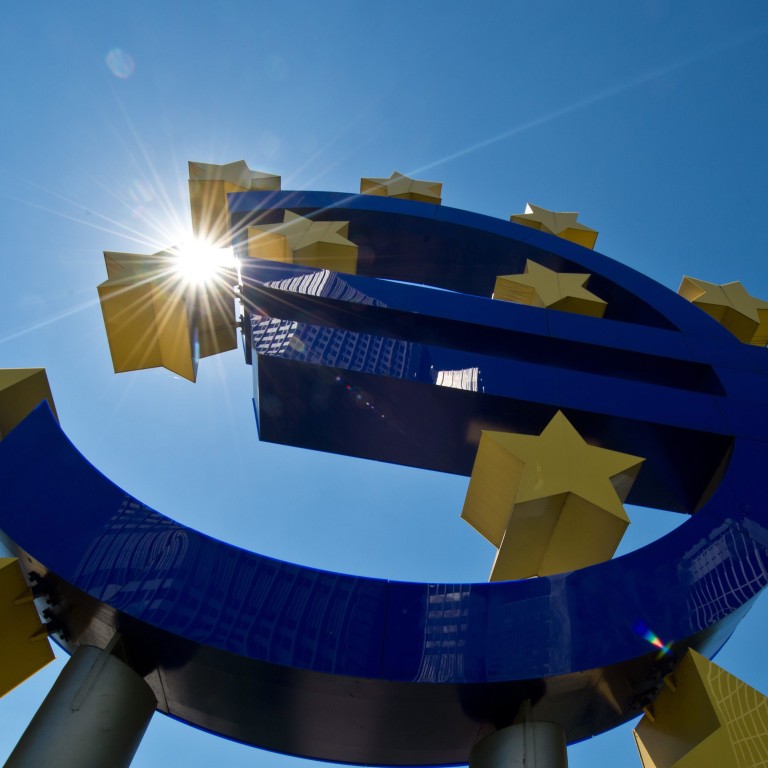
Europe's jittery markets find their feet while the economy stumbles along
Nicholas Spiro says a look at the economic performances across the euro zone shows prospects remain bleak for turning modest growth into any form of sustainable recovery
As 2013 draws to a close, it appears that the worst of the crisis in Europe's ailing single currency area has passed.
For the past year or so, the bond markets of the periphery of the euro zone, which in 2011 and the first half of last year were a byword for panic and surging yields, have proved extremely resilient.
The acute phase of the euro-zone crisis is over. This is a feat in itself, given the dramatic loss of confidence in Europe in the first two years of the crisis.
It's even more remarkable considering the numerous potential triggers for a renewed flare-up of the crisis, starting with an inconclusive Italian election in February, followed by a precedent-setting shift from a "bail-out" to a "bail-in" regime for the euro-zone's vulnerable banks and, last but by no means least, plans by the US Federal Reserve to exit its programme of quantitative easing - the main pillar of support for financial markets over the past several years.
Make no mistake, euro-zone debt markets have been a bastion of stability this year. But this is just the first half of a tale of two halves.
The second half, and the one which is far more troubling, is the state of Europe's economy. While there has been a dramatic improvement in investor sentiment towards the euro zone, as the threat of an imminent break-up of the bloc has been averted, the euro-zone economy remains extremely weak, laid low by a persistent credit crunch, ghastly levels of unemployment and, in some countries, outright deflation.
The European Central Bank, the institution that has been carrying the euro zone on its shoulders throughout the four-year-old crisis as Europe's leaders have dithered and differed over the management of the crisis, has been remarkably successful in stemming the panic in debt markets but has done little to help the real economy.
This is partly because, unlike the Fed which has a "dual mandate" of controlling inflation and promoting low unemployment, the ECB is constrained from taking bolder action, such as full-blown quantitative easing which, although legally permissible, is politically perilous.
The Bundesbank, Germany's central bank, has already tried to stop the launch of the ECB's still-unused new bond-buying scheme, known as Outright Monetary Transactions.
Although the ECB cut its main interest rate last month, it is under significant pressure to do more to help revive growth in the euro zone. The reality, however, is that in the absence of Fed-style quantitative easing or more explicit "forward guidance", the ECB is running out of ammunition.
Euro-zone governments, meanwhile, are running out of time.
Austerity fatigue has set in just when structural reforms (liberalising labour and product markets in order to improve competitiveness) are needed to ensure that what little growth there is in the euro zone turns into a meaningful and sustainable recovery.
Right now, this looks like a bleak prospect. Three of the five largest economies in the euro zone - Italy, Spain and the Netherlands - will again suffer falls in output this year, while France, whose economy contracted in the third quarter, will be lucky to grow.
Even in Spain, which exited a two-year-long recession in the third quarter, manufacturing output was still contracting last month, with domestic demand expected to keep contracting next year.
Europe's deep economic malaise stems partly from the collapse in bank lending to the private sector. New regulatory requirements - which include further "stress tests", this time overseen by the ECB as part of its new supervisory duties in the banking sector - are forcing European banks to deleverage, resulting in sharp falls in corporate lending, particularly to small and medium-sized enterprises. These firms are the main source of growth and employment in southern Europe.
Not surprisingly, the political climate across Europe is souring significantly, with populist and anti-European sentiment becoming much more pronounced of late. Italy and France, the "sick men" of Europe, are the countries to watch.
In Italy, the political scene is in a state of flux amid a rise in anti-German sentiment and a severe and protracted economic downturn that is stymieing reform. There's an inescapable feeling that political tensions between Brussels and Rome are set to escalate dramatically next year.
Yet it's France which poses an even bigger problem for the euro zone as its economy drifts further away from Germany in terms of performance and competitiveness.
In European parliamentary elections next May, France's anti-European National Front party is expected to see its share of the vote surge. This would set the cat among the pigeons.

